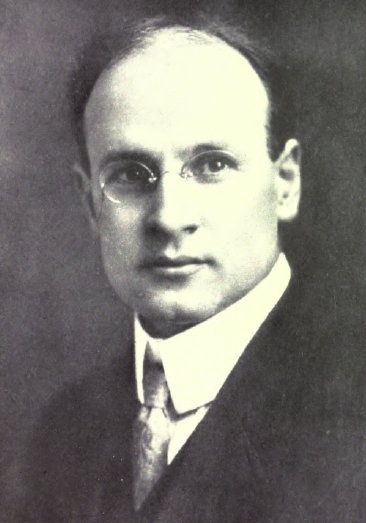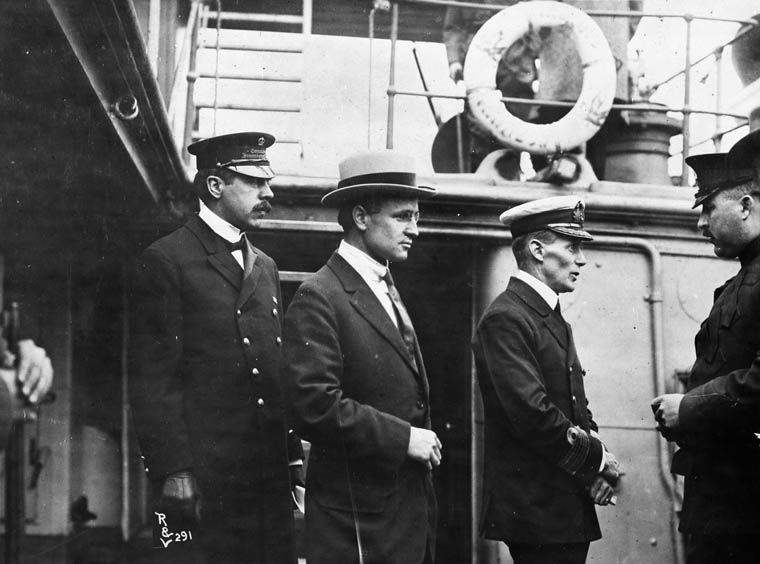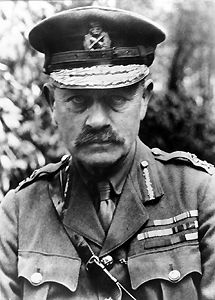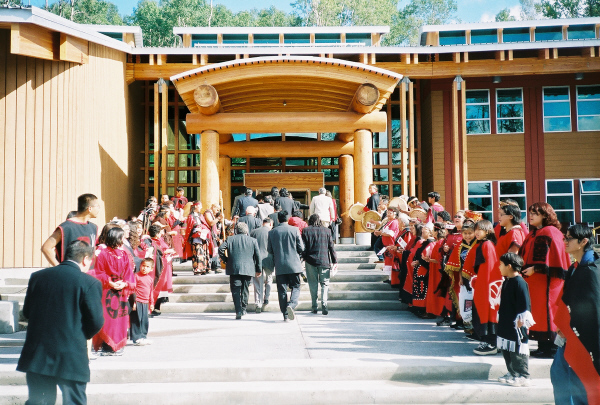Henry “Harry” Herbert Stevens, businessman, politician, federal cabinet minister (born 8 December 1878 in Bristol, England; died 14 June 1973 in Vancouver, BC). Henry Herbert Stevens was a Vancouver city councillor, a long-serving member of parliament (MP) and a federal cabinet minister. He was a key figure in the King-Byng Affair and in the turning away of the Komagata Maru. Stevens was outspoken in his opposition to immigration, Vancouver’s Chinese community and BC’s First Nations, and in his efforts to preserve Canada as “a white man’s country.” (See also Racism; Prejudice and Discrimination in Canada.) He was also the founder and leader of the short-lived Reconstruction Party.

Early Years and Family
In 1887, when Henry Stevens was nine years old, his widowed father moved him, his two sisters and older brother from their home in Bristol, England, to Peterborough, Ontario. In 1894, hoping for greater opportunities, his father moved the family to Vernon, British Columbia.
As a young man, Stevens worked at various jobs until, seeking adventure, he joined the transport section of the US Army. He served as a civilian volunteer in the Philippines and in China during the Boxer Rebellion.
Stevens returned to British Columbia in 1901. Within a few years, he had purchased a grocery store in Vancouver. He later became an accountant with a trust company and formed a successful brokerage firm called Vancouver Holdings. It specialized in accounting, insurance and real estate. Stevens married Gertrude Glover in 1905. They had five children together.
Early Political Career
Stevens joined the Conservative Party in 1903. He won election to Vancouver City Council in 1909 and started a small newspaper, the Western Call, in 1910. The Western Call often focused on what it considered Vancouver’s “Chinatown problem” — namely, illegal establishments run by Chinese entrepreneurs that offered gambling, alcohol and opium.

Federal Politics
In the 1911 federal election, Stevens ran for and won a seat as the Conservative Party’s candidate for Vancouver City. In his maiden speech in the House of Commons, Stevens called for more restrictive immigration laws. His stated goal was to keep Canada “a white man’s country and not as a field to be exploited by Asiatics.” Stevens also secured federal funds to improve Vancouver Harbour and worked to win defence contracts for BC companies during the First World War.
Komagata Maru
On 23 May 1914, the SS Komagata Maru arrived in Vancouver. The 376 passengers were British subjects from India. Canada’s restrictive immigration laws forbade anyone to enter Canada who had not come directly from their native country. This excluded people from South Asia because no existing shipping lines offered direct passage from India to Canada. A Punjabi businessman named Gurdit Singh had chartered the Komagata Maru for passage from India to Canada (with stops in China and Japan) to directly challenge the law.
A two-month standoff ensued, during which the ship was anchored in English Bay. Immigration officials in Vancouver refused to allow the passengers to disembark. One of the Komagata Maru’s most prominent opponents, Stevens argued fervently in favour of the expulsion of the passengers. The case was finally settled with a court decision on 6 July, ordering them to leave Canada. Stevens approved of the ruling, saying that it had to be done to prevent immigrants from threatening to “swamp this country and the white race.” The Komagata Maru was forced to return to India, where 20 of the passengers were killed in an altercation with British Indian police. (See also Vancouver Feature: Sikh Migrants Stalled in Harbour.)

King-Byng Affair
In September 1921, Stevens was appointed minister of trade and commerce. However, his time in cabinet was short-lived. While he won his Vancouver Centre seat in the December 1921 election, Arthur Meighen’s Conservatives lost to the Liberal Party led by William Lyon Mackenzie King.
Stevens was re-elected in 1925. He played an important role in revealing a scandal in the King government’s Customs and Excise Department. The committee that was formed in reaction to Stevens’ accusations led to months of emotional debate, and finally to King asking Governor General Byng to call an election. Byng refused. On 29 June 1926, Byng asked Meighen to form a government. (See King-Byng Affair.)
Meighen appointed Stevens the acting minister of customs and excise; the interior; mines; trade and commerce; and agriculture. He also appointed Stevens acting superintendent-general of Indian affairs. However, Mackenzie King questioned the constitutionality of the new government and forced a non-confidence vote and a new election. On 14 September 1926, voters put the King government back in power. Stevens was re-elected in opposition.

First Nations Land Claim, 1927
In 1927, a special joint committee of the Senate and the House of Commons was formed to consider a land claim petition that had been submitted by First Nations in British Columbia the previous year. By all accounts, Stevens dominated the committee by being continuously hostile to First Nations counsel. The committee concluded that First Nations counsel had not demonstrated legal title to the land in question. It recommended that the case be closed and that parties pursuing Aboriginal title claims in the future be banned from obtaining funding to do so. It also recommended a $100,000 annual allotment for First Nations in BC to spend on education, health care and agriculture.
Bennett Government
In 1930, the Conservative Party led by R.B. Bennett won a majority government. Stevens, however, lost his seat. Bennett had shared an office and a House of Commons desk with Stevens and was impressed with his abilities. Wanting an old friend at his side, he appointed Stevens minister of trade and commerce. To free up a seat for Stevens, Bennett gave the Conservative MP from Kootenay East a patronage appointment and called a by-election for the vacated seat. Stevens won by acclamation.

Clashes with Bennett and Big Business
In January 1934, Stevens delivered a speech to a meeting of the National Shoe Retailers' Association of Canada. He accused large department stores of using their buying power to demand price concessions from manufacturers. This resulted in small, independent retailers being unable to compete and, in many instances, going bankrupt. Bennett was angry that Stevens had delivered his speech without first clearing it with cabinet. Stevens offered to resign, but the resignation of such a high-profile cabinet minister would have been politically damaging to a government that was growing increasingly unpopular. So, Bennett created a parliamentary committee to investigate price fixing and named Stevens as its chair.
The public meetings for the Special Committee on Price Spreads and Mass Buying lasted for 18 weeks. The committee’s findings led to the creation of the Royal Commission on Price Spreads, with Stevens as chair. However, big business leaders, many of whom were important Conservative Party supporters, complained to the prime minister that Stevens was making them look bad. The situation came to a head when Stevens had a pamphlet printed that summarized the commission’s findings while its work was still in progress. When Bennett got word of the pamphlets, he tried to retrieve all that had been distributed. When the pamphlet’s contents were printed in the Winnipeg Free Press, Stevens was harshly criticized in the Conservative Party caucus. Bennett asked Stevens to retract the pamphlet’s most incendiary points. Stevens refused. The prime minister then announced that Stevens had resigned from cabinet.
Reconstruction Party
As Stevens’ work on the Royal Commission on Price Spreads continued, his relationship with Bennett grew worse. When the Bennett government proposed legislation to address some of the problems revealed by the Royal Commission, Stevens called the proposals inadequate.
Stevens was seen by many Canadians as representing their interests in a fight against corporate power. On 7 July 1935, he announced the creation of the Reconstruction Party with himself as leader. The party’s manifesto proposed enhancing the government’s role in regulating big business and supporting Canadian workers.
Stevens resigned from the Conservative Party. Reconstruction Party candidates were nominated across the country for the federal election on 14 October 1935. Mackenzie King’s Liberals won the election and formed a majority government. The Reconstruction Party earned 8.9 per cent of the popular vote. Stevens was the only party candidate to win a seat.
Later Years
Stevens returned to the House of Commons as an opposition MP, but the Reconstruction Party crumbled. He rejoined the Conservative caucus in January 1938 but lost his seat in the 1940 election. He lost again in 1949. Stevens worked with many local service groups, including the Vancouver Board of Trade, for which he served as chair. He died on 14 June 1973.
Legacy
In August 2019, federal Minister of Public Services Carla Qualtrough and Minister of Defence Harjit Sajjan announced that the federal building at 125 10th Ave. East in Vancouver would no longer be called the Henry Herbert Stevens Building. At a brief ceremony, it was stated that removing his name from the building was a “symbolic gesture of reconciliation to the victims of the Komagata Maru incident.” The incident was also memorialized by jazz musician Michael Blake, a great-grand nephew of Stevens, in his 2016 musical suite The Komagata Maru Blues.
See also Komagata Maru; Vancouver Feature: Sikh Migrants Stalled in Harbour.

 Share on Facebook
Share on Facebook Share on X
Share on X Share by Email
Share by Email Share on Google Classroom
Share on Google Classroom






